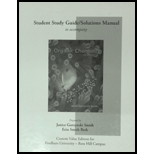
Concept explainers
(a)
Interpretation: The product formed by the treatment of
Concept introduction: Alkyl chlorides are obtained by the reaction of
Answer to Problem 9.29P
The product formed by the treatment of

Explanation of Solution
The given reagent is
Alkyl chlorides are obtained by the reaction of
Thus, the product formed by the treatment of

Figure 1
(a) The product formed by the treatment of
(b)
Interpretation: The product formed by the treatment of
Concept introduction: Alcohols are converted into alkyl tosylates by treatment with
Answer to Problem 9.29P
The product formed by the treatment of

Explanation of Solution
The given reagent is
Alcohols are converted into alkyl tosylates by treatment with
Thus, the product formed by the treatment of

Figure 2
The product formed by the treatment of
(c)
Interpretation: The product formed by the treatment of
Concept introduction: Alcohols undergo dehydration reaction in the presence of strong acids like
Answer to Problem 9.29P
The product formed by the treatment of

Explanation of Solution
The given reagent is
Alcohols undergo dehydration reaction in the presence of strong acids like
Thus, the product formed by the treatment of
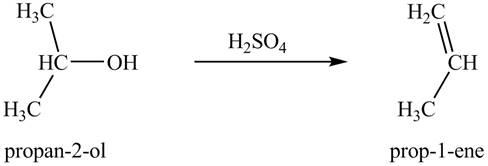
Figure 3
The product formed by the treatment of
(d)
Interpretation: The product formed by the treatment of
Concept introduction: The reaction of alcohols with halogen acids
Answer to Problem 9.29P
The product formed by the treatment of

Explanation of Solution
The given reagent is
The reaction of alcohols with halogen acids
Thus, the product formed by the treatment of

Figure 4
The product formed by the treatment of
(e)
Interpretation: The product formed by the treatment of
Concept introduction: Alkyl bromides are obtained by the reaction of
Answer to Problem 9.29P
The product formed by the treatment of
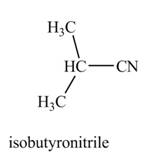
Explanation of Solution
The given reagents are
Alkyl bromides are obtained by the reaction of
Thus, the product formed by the treatment of
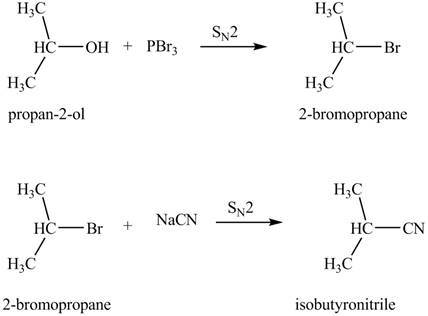
Figure 5
The product formed by the treatment of
(f)
Interpretation: The product formed by the treatment of
Concept introduction: Alcohols undergo dehydration reaction in the presence of
Answer to Problem 9.29P
The product formed by the treatment of

Explanation of Solution
The given reagent is
Alcohols undergo dehydration reaction in the presence of
Thus, the product formed by the treatment of
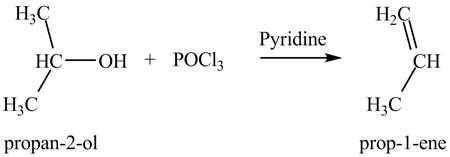
Figure 6
The product formed by the treatment of
Want to see more full solutions like this?
Chapter 9 Solutions
Organic Chemistry -Study Guide / Solution Manual (Custom)
- Draw the products formed when CH3CH2CH2CH2OTs is treated with each reagent.a. CH3SHb. NaOCH2CH3c. NaOHd. KOC(CH3)3arrow_forwardDraw the products formed when each acetal is treated with aqueous acid.arrow_forwardDraw the products formed when each compound is treated with one equivalent of HBr.arrow_forward
 ChemistryChemistryISBN:9781305957404Author:Steven S. Zumdahl, Susan A. Zumdahl, Donald J. DeCostePublisher:Cengage Learning
ChemistryChemistryISBN:9781305957404Author:Steven S. Zumdahl, Susan A. Zumdahl, Donald J. DeCostePublisher:Cengage Learning ChemistryChemistryISBN:9781259911156Author:Raymond Chang Dr., Jason Overby ProfessorPublisher:McGraw-Hill Education
ChemistryChemistryISBN:9781259911156Author:Raymond Chang Dr., Jason Overby ProfessorPublisher:McGraw-Hill Education Principles of Instrumental AnalysisChemistryISBN:9781305577213Author:Douglas A. Skoog, F. James Holler, Stanley R. CrouchPublisher:Cengage Learning
Principles of Instrumental AnalysisChemistryISBN:9781305577213Author:Douglas A. Skoog, F. James Holler, Stanley R. CrouchPublisher:Cengage Learning Organic ChemistryChemistryISBN:9780078021558Author:Janice Gorzynski Smith Dr.Publisher:McGraw-Hill Education
Organic ChemistryChemistryISBN:9780078021558Author:Janice Gorzynski Smith Dr.Publisher:McGraw-Hill Education Chemistry: Principles and ReactionsChemistryISBN:9781305079373Author:William L. Masterton, Cecile N. HurleyPublisher:Cengage Learning
Chemistry: Principles and ReactionsChemistryISBN:9781305079373Author:William L. Masterton, Cecile N. HurleyPublisher:Cengage Learning Elementary Principles of Chemical Processes, Bind...ChemistryISBN:9781118431221Author:Richard M. Felder, Ronald W. Rousseau, Lisa G. BullardPublisher:WILEY
Elementary Principles of Chemical Processes, Bind...ChemistryISBN:9781118431221Author:Richard M. Felder, Ronald W. Rousseau, Lisa G. BullardPublisher:WILEY





